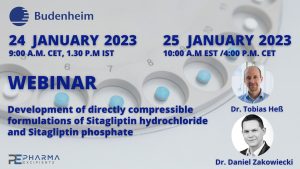RGD-decorated PLGA nanoparticles improved effectiveness and safety of cisplatin for lung cancer therapy

Upon extensive pharmaceutical and biomedical research to treat lung cancer indicates that lung cancer remains one of the deadliest diseases and the leading cause of death in men and women worldwide. Lung cancer remains untreated and has a high mortality rate due to the limited potential for effective treatment with existing therapies. This highlights the urgent need to develop an effective, precise and sustainable solutions to treat lung cancer. In this study, we developed RGD receptor-targeted PLGA nanoparticles for the controlled and targeted co-delivery of cisplatin (CDDP) and upconversion nanoparticles (UCNP) in lung cancer therapy. Pluronic F127-RGD conjugate was synthesized by carbodiimide chemistry method and the conjugation was confirmed by FTIR and NMR spectroscopy techniques.
PLGA nanoparticles were developed by the double emulsification method, then the surface of the prepared nanoparticles was decorated with Pluronic F127-RGD conjugate. The prepared formulations were characterized for their particle size, polydispersity index, zeta potential, surface morphology, drug encapsulation efficiency, and in vitro drug release and haemolysis studies.
Highlights
- This study translates the development of RGD decorated PLGA nanoparticles to deliver bioactive molecules.
- Cisplatin and upconversion nanoparticles were co-delivered via PLGA nanoparticles.
- Developed formulationed were characterized and results were interpreted in terms of physicochemical properties and pharmacokietics.
- The efficacy and safety of cisplatin were proved through hemolysis in human blood, histopathology and biochemical estimation in rats.
- The developed formulation may produce potential effects of loaded cargoes in in-vitro and in-vivo models.
Pharmacokinetic studies and safety parameters in BAL fluid were assessed in rats. Histopathology of rat lung tissue was performed. The obtained results of particle sizes of the nanoparticle formulations were found 100–200 nm, indicating the homogeneity of dispersed colloidal nanoparticles formulations. Transmission Electron Microscopy (TEM) revealed the spherical shape of the prepared nanoparticles.
The drug encapsulation efficiency of PLGA nanoparticles was found to range from 60%-80% with different nanoparticles counterparts. RGD receptor-targeted PLGA nanoparticles showed controlled drug release for up to 72 h. The pharmacokinetic study revealed that RGD receptor-targeted PLGA nanoparticles were 4.6-fold more effective than Ciszest-50 (marketed CDDP injection). Furthermore, RGD receptor-targeted PLGA nanoparticles exhibited negligible damage to lung tissue, low systemic toxicity, and high biocompatible and safety in lung tissue. The results of RGD receptor-targeted PLGA nanoparticles indicated that it is a promising anticancer system that could further exploited as a potent therapeutic approach for lung cancer.
Read more
Bhavna Yadav, Mahima Chauhan, Saurabh Shekhar, Abhitinder Kumar, Abhishek Mehta, Amit Kumar Nayak, Rohit Dutt, Vandana Garg, Vikas Kailashiya, Madaswamy S. Muthu, Sonali, Rahul Pratap Singh, RGD-decorated PLGA nanoparticles improved effectiveness and safety of cisplatin for lung cancer therapy, International Journal of Pharmaceutics, 2023, 122587, ISSN 0378-5173, https://doi.org/10.1016/j.ijpharm.2023.122587.
Our next webinar:
For free registration and more information click on the picture below or here:


